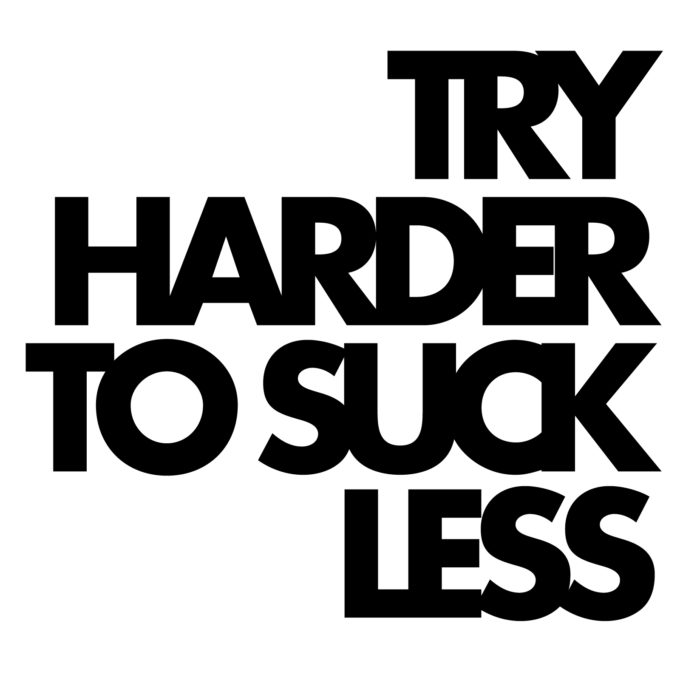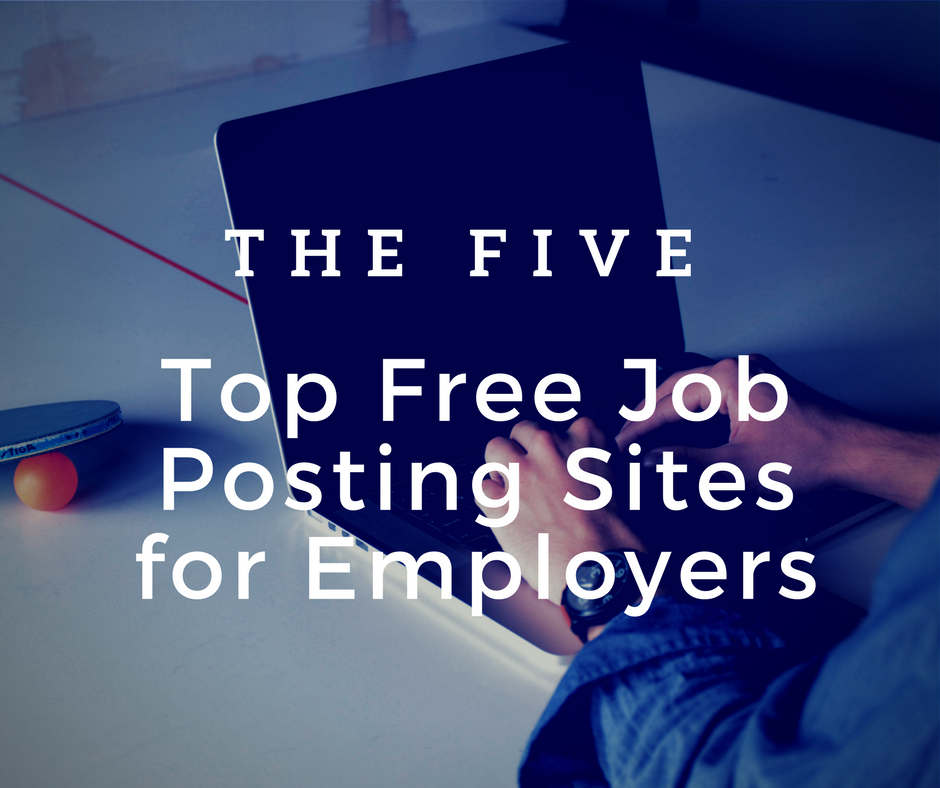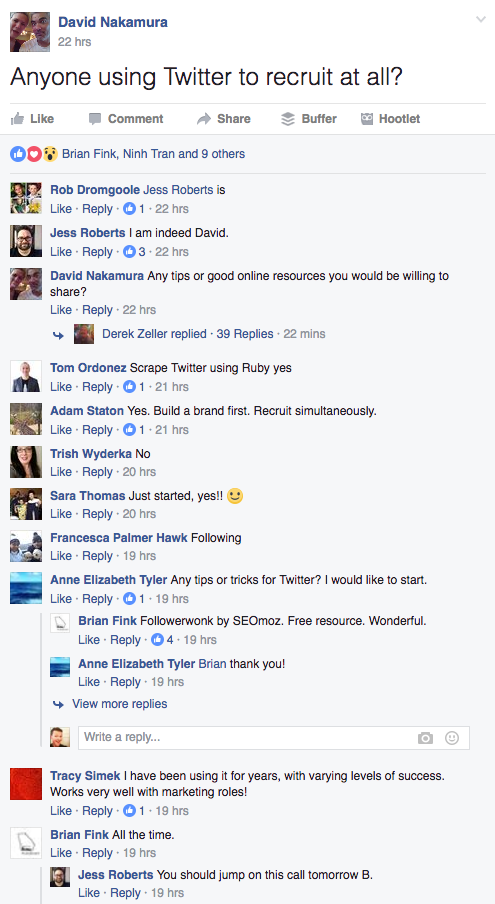 As any recruiter or talent acquisition professional can tell you, at a foundational and fundamental level, that even today, job descriptions still play among the most important and influential roles in talent attraction. No tool or technology has diminished their importance.
As any recruiter or talent acquisition professional can tell you, at a foundational and fundamental level, that even today, job descriptions still play among the most important and influential roles in talent attraction. No tool or technology has diminished their importance.
In fact, the many matching technologies out there, along with recruitment marketing mainstays like social and search engine marketing, have only extended their visibility, reach and relative importance within the talent attraction process.
So why do so many of us still suck so badly at writing them?
Here in The Real World: The Current (Sorry) State of Job Descriptions.
It’s no secret that reading a job description can be about as exciting as reading the resumes that they inevitably generate.
They somehow say too little and too much at the same time, overselling the company while underemphasizing what the role in question really entails. That is, if you can understand what they’re looking for at all.
Many job descriptions are as indecipherable and inscrutable as Ikea assembly instructions, the novels of James Joyce or B2B content marketing.
Most of us have read a job description at some point and still had no idea what the job was or what the company was looking for. It’s industry jargon meets The Jabberwocky.
It is ironic that we even call them “job descriptions.” They hardly ever actually describe jobs. They do everything but deliver on their eponymous promise. Not that you should judge a book by its cover, nor should you judge a company exclusively by the relative merits of its job postings and how well written or descriptive they are.
Assume, for a moment, that most job descriptions are poorly structured, completely generic, overly complex and excruciatingly worded documents that recruiters seem to neglect, even if their hiring managers obsess far too much over their contents. Candidates don’t read them; instead, they often send in a resume that’s just as meaningless and obtuse as the position description for the job they’re applying for.
You can’t blame them for bothering with the fine print when the big picture remains essentially inscrutable. We might have come a long way in the business of hiring, but some things never change – just like most job descriptions, which are almost always some ancient HR relic created for compensation.
So why do bad job postings happen to good companies? It’s a fair question. After all, it’s one probably every hiring manager has asked themselves at one point or another.
The first thing most of us do when we finally get a backfill or additional headcount approved is put together the list of “must haves” that have been percolating in our heads the entire time we’ve been going through the draconian internal approval and HR planning processes.
By the time hiring managers finally get to turn those dreams into a real hire, they often have a tendency to go a bit overboard – which is why the average intake meeting involves mostly requirement gathering and talking through preferred and basic qualifications.
Our entire hiring process starts with job descriptions. You can’t find what you’re looking for if you don’t know what it is.
Chasing That Neon Rainbow.
 Unfortunately, too many employers are looking for everything. They think they’ll know it when they find it, but the problem with that is this generally tends to turn off any candidates worth finding by asking not what the company can do for the candidate, but rather, what the candidate can do for the company.
Unfortunately, too many employers are looking for everything. They think they’ll know it when they find it, but the problem with that is this generally tends to turn off any candidates worth finding by asking not what the company can do for the candidate, but rather, what the candidate can do for the company.
This generally results in a wish list that may or might not match what you actually need (sorry recruiters), and often the first public posting has some pretty asinine requirements. It’s not uncommon to see some entry level grunt position asking for a PhD in applied physics or molecular engineering (they’re smart enough to know better, by the way).
I’ve seen reqs asking for “a minimum” 10 years of iOS development experience, which, save the Apple launch team, is an impossible ask (the original rolled out only a decade ago). Similarly, most social media positions are looking for years of experience that predate the tech and tools of the trade.
Sorry. No one has 5 years of experience managing a brand’s SnapChat account, or has yet devoted a decade to Twitter engagement or analytics, for example.
Similarly, you see many JDs asking for experience managing direct reports for individual contributor roles, those which require expertise in a programming language the position doesn’t require or extensive expertise in an industry, like AI or VR, that’s more or less brand new.
Few hiring managers sit down and draft any list of requirements or write a JD in the absence of realistic expectations or market realities; after all, it’s the recruiters who have to go on the Quixotic search for these candidates, not you.
You think only of outcome, not about execution, and that’s where the tension in talent acquisition so often starts.
9 Reasons Why We Still Suck At Job Descriptions (And How To Fix Them)
 Their entire job consists of finding the top talent the hiring manager wants, and therefore, the onus to somehow do the impossible lies entirely with them.
Their entire job consists of finding the top talent the hiring manager wants, and therefore, the onus to somehow do the impossible lies entirely with them.
If they can’t deliver on what the hiring manager asks for, no matter how ridiculous that ask may be, then they have failed, even if that failure is an inevitability anyone who read the job description could have pretty easily predicted.
While hiring managers are quick to blame recruiters for their shortcomings, and recruiters often feel frustrated or fed up with hiring managers in return, the real culprit is often overlooked: if the job description sucks, then any interested candidates probably will be, too.
If you’re a recruiter who finds yourself in the predicament of having to source, screen and slate candidates for some abysmal or asinine job description, don’t freak out.
If you find yourself pressing “post” on a JD that’s totally terrible, reevaluating your life and questioning the professional decisions you’ve made that got you to this low point, don’t bother second guessing yourself or playing the blame game. No one has time for that bullshit.
You have a job to fill. At some point, however, there will be time to have to justify why the search has stalled, and why you simply can’t find the kind of candidate that the hiring manager wants.
Here are 9 reasons why recruiters still suck at job descriptions, and why it’s not their fault – the truth, turns out, is a little more complicated than it seems.
1. Your Hiring Manager Hates You.
 You’re in HR, and the hiring manager has a real job to do. They’re loathe to give you the time of day, much less the time it takes to partner on a compelling and effective job description.
You’re in HR, and the hiring manager has a real job to do. They’re loathe to give you the time of day, much less the time it takes to partner on a compelling and effective job description.
So you’re forced to make due with what you’ve got.
It only follows that when your hiring manager gives you absolutely nothing to work with, they shouldn’t expect the results to be any different.
2. The Government Is Out To Get You.
 You could easily find the candidates you need, but the government won’t sponsor their visas, and your company wouldn’t pay for them if they could. Our workforces are global, our companies multinational, but unfortunately, our approach to talent acquisition remains essentially isolationist.
You could easily find the candidates you need, but the government won’t sponsor their visas, and your company wouldn’t pay for them if they could. Our workforces are global, our companies multinational, but unfortunately, our approach to talent acquisition remains essentially isolationist.
In addition to the dearth of available visas, particularly the more coveted and competitive programs, like the H1B, the government has other ways to keep you from hiring any candidate who isn’t a US citizen or green card holder.
By the time a recruiter succeeds in getting a visa, they’re inherently admitting they’ve already failed; work visa approvals require employers to prove they made a “reasonable effort” to hire an American worker for the position, but failed.
So anytime a company sponsors workers, it’s because the recruiter couldn’t find anyone in the US, first. The government is making recruiters admit they’re not able to do their jobs before giving them what they need to get their jobs done. Talk about a Catch 22.
Screw that noise; you can outsmart the man by requiring stuff like “a minimum of 1o years of iOS development experience” knowing that it’s impossible to find in the US. Do a couple fake interviews, make sure you post that terrible job description where ever you can, and soon you’ll have all the documentation required to get the visas you need for the candidates you want. Brilliant, right?
3. The Lawyers Are Out For Revenge.
 As a rule, lawyers are the ones who really make the rules, and they don’t care how compelling a job description is.
As a rule, lawyers are the ones who really make the rules, and they don’t care how compelling a job description is.
They only care that it’s compliant, and that the company’s ass is covered from any sort of liability that might arise from making the wrong hire.
Every in-house counsel has dealt with some sort of wrongful termination lawsuit at some point in their careers, and they remember the only thing that can save your ass in that situation are those same list of frustratingly esoteric or ostensibly impossible to find requirements that so often ruin recruiting.
They may make it hard to find a single qualified candidate, but they make it impossible for that new guy or gal to retaliate or win any sort of legal action if he or she ends up fired – which, in cases where there are too many unrealistic requirements, is sadly almost an inevitability.
The company can always declare that they discovered the candidate didn’t meet the minimum qualifications for the position (no matter if no one could) and that this lack of basic skills led directly to the performance issues necessitating their determination.
Boom. That, my friends, is why they pay lawyers the big bucks. Even if it comes at a steep cost for recruiters.
4. The Fit Bit.
 Hiring managers often reject otherwise perfect candidates for completely biased or subjective reasons.
Hiring managers often reject otherwise perfect candidates for completely biased or subjective reasons.
Candidates get rejected for not making enough eye contact (shady), making too much eye contact (creepy), coming across as too nervous in an interview (wussy) or coming across as too confident (douchebaggery).
Sometimes the hiring managers know why they don’t want a certain candidate (“he went to Yale, and you know how those Elis are”) or sometimes, they just don’t like the guy but can’t put their finger on it (“I just didn’t feel any connection there”).
Either way, it’s obviously awkward to put “I thought he smelled vaguely of garlic and his suit looked like it came off the rack at Target” (or whatever the real reason might be) onto paper or any formal form for interview feedback.
And you can’t put stuff like, “his accent was way too strong” or “if he lost a couple hundred pounds, maybe I’d consider putting him in front of clients” in writing, because that’s the evidence that even the best lawyers can’t overcome in a hiring discrimination or wrongful termination suit.
You know what’s easier? Just saying that they weren’t a culture fit. No one ever asks you to explain anymore than that, because, you know, culture fit can’t be captured in a job description. Which is, of, course, a big part of the problem, but one hell of a convenient excuse for eliminating otherwise viable and qualified candidates for no real reason.
Culture fit is how bias happens, and it’s perfectly legal. As long as you have something in the job description about soft skills, you’re covered. Pretty cool, right?
5. Two Jobs, One Stone.
You need to hire like a team of 10 people to handle all the skill sets and responsibilities you’re looking for in a single job description, but you don’t have the headcount or the budget to do that. So you’ve gotta find someone to do as much as possible for as little as possible.
This means that the longer the list of skills you list on a job description, the more of those boxes you can check for every candidate – and the more ammunition you have for negotiating with the hiring manager to take the interview or make the offer.
Even if some of the requirements are stuff like knowing how to use MS Word or being able to use a web browser or lifting more than 25 pounds at irregular intervals, the more of these specious prerequisites they can meet, the better you’re both going to look.
Added bonus: if the hiring manager pushes back on a candidate for one open position, if you consistently augment every JD with the same unnecessary, superficial or stupid requirements, then guess what? They’re suddenly in play for every position you’re working on. Talk about efficient recruiting.
6. Anywhere But Here.

Let’s face it: interviewing and rejecting candidates sucks. What’s even worse is that statistically, you have to waste your time on well over 90% of candidates who apply, not to mention having to deal with rejecting every finalist who actually makes it through the arduous hiring process right before they cross the finish line.
Of course, even finding these silver medalists who you don’t end up hiring requires spending countless hours reviewing resumes, conducting initial phone screens (inevitably, the worse the candidate is, the longer these last), generating referrals, running references and the million other time sucks recruiters are required to do simply to narrow the funnel down to a handful of worthwhile candidates.
Most job descriptions generate hundreds of external applications (an average of around 200, according to one recent survey); furthermore, even the most perfunctory direct sourcing activities are likely to uncover dozens more potential fits who you have to engage and interest in an opportunity before they even enter the funnel.
Recruiting takes a ton of time, and most of us would rather be doing something – anything – else besides wasting most of our days with the 99.9% of candidates we’ll never need or use ever again. By creating more complex job descriptions, or by making extremely niche experience, highly esoteric expertise or any other scarce skill set a minimum qualification for your job, then the less candidates you’ll have to deal with.
Sure, the more prerequisites you require, the harder the role is going to be to finally fill, but at least you won’t have to waste all that time dealing with the masses, and you can put all your efforts into interacting with and recruiting the real rock stars. Let someone else waste their time on the B players.
If you’re looking for top talent, job descriptions have to be written so restrictively that they only apply to the best and the brightest. Sure, you might not have any great candidates to show for these efforts, but surely that’s better than having to spend all day dealing with too many marginal ones.
Without candidates, “candidate experience’ is a piece of cake.
7. Going After Go Getters.
Your job description lists all the skills a new hire will learn over the course of their career at your company instead of focusing on the ones they need to have before getting their foot in the door. Hiring for potential sounds like a great idea, but if they can’t do the job over the short term, the long term is irrelevant.
You don’t want people who can learn, grow and adapt – you want people who are going to show up, do their jobs, and put what’s needed today over what’s possible tomorrow. The more entrepreneurial or aspirational a candidate is, the bigger the liability they are for recruiters, since they always want more and are never satisfied just doing what’s in their damned job description.
The real go getters you want to recruit aren’t the ones with a lot of future potential, but the ones who will do anything to get the job right now. Sure, they might be gone in a few months, but hey, better than those constantly complaining HiPos who think that this is anything more than a paycheck.
if your candidates aren’t overstating their skills, hyperbolizing their experience or telling you what you want to hear, even if that’s not the truth, then they’re probably never going to make it, anyway. They clearly lack confidence and probably won’t be a top performer at your business if they’re not willing to exaggerate a bit to get the business outcome they want.
They also know that all that stuff about “hiring for potential,” internal mobility or advancement opportunities they read about in your job descriptions are complete BS. If they’re still in process and playing the game by your rules, well, that’s a “go getter” you want to go get.
If a candidate isn’t willing to do whatever it takes to get a job (which involves a lot of lying and self-aggrandizing, to be honest), then they don’t it badly enough – and you can knock out the honest, humble and ambitious candidates for one simple reason: they’re obviously not a “culture fit.”
Later, losers.
8. Because, Unicorns.

Perfect candidates don’t exist. That’s why no job description is going to be perfect, either. When you’re looking for something that only exists in fiction, you don’t have to worry about reality at all. You just want to find the unicorn, and you’ll use whatever bait it takes to lure them into your trap.
Failing that, you can always slap a horn on a horse and hope your hiring manager buys it. But if that req gets closed, then the job description did its job. Unicorns don’t have to be real for people to believe in them. The same goes with the “perfect candidate.”
Fantasy is easier to deal with than fact, since you can invent your own worlds and alternative reality as needed. In recruiting, of course, course, we refer to this as “employer branding” – a mythical place where unicorns roam free and job descriptions accurately describe jobs.
9. Opportunity Costs.
Hey, if you’re going to shell out a salary that’s any more than minimum wage, much less tens of thousands of American dollars a year for some worker who’s probably going to be replaced by a robot well before they retire, you need to create some return on that recruiting investment. Back in the day, people would have killed to make five figure salaries in a year.
Now, candidates expect not only big bucks (I mean, what kind of world are we living in when college grads can command north of $40,000 a year?), but also ridiculous benefits like 401(k) matching, dental insurance or paid time off. That’s right. Most candidates think they deserve to get paid for doing nothing. Who do they think they are, a recruiter?
Recruiters have to justify the high expenses involved in hiring, particularly to the hiring mangers who pay new hires’ salaries directly from their budget, a huge cost that is always the biggest line item expense on any P/L. Add in the average 20% of annual salary it costs to recruit those new hires, and suddenly ROI becomes really important.
That is why you need to make sure the candidate you’re hiring generates exponentially more money for your company than the salary and associated expenses you’re incurring by keeping them on payroll. A good rule of thumb is that every $50,000 in salary should directly generate an additional million dollars in business value annually. Times are tight, after all.
By making ridiculous demands on your workers, and having completely unrealistic expectations that they’re expected to somehow exceed, you’re ensuring that new hires won’t be given a job. They have to earn it.
If you make it clear that you’re not only a data driven organization, but one that really only cares about how many dollars their employees are generating, then you have hard numbers to justify otherwise arbitrary decisions, like which candidates to hire and which employees to fire (or promote).
If you document these revenue requirements in the job description, and reiterate that they must meet these numbers regardless of extenuating circumstances during the hiring process, then you have carte blanche to do whatever the heck you want with your workers.
The beauty of making stretch goals unobtainable is that when no one succeeds in making their numbers, everyone is dispensable, and you’ve always got cause for termination for anyone you don’t like. The best part is you have no liability as long as you put it somewhere in the job description.
Which might be unreadable and turn off every applicant out there, but c’mon, how many people actually read these to begin with? If you need to justify why your job description sucks so very much, then remember, they’re like the corporate equivalent of the Apple Terms of Service.
They’re written for lawyers, not candidates, and while they cause friction between hiring managers and recruiters, they eliminate both parties from pretty much all liability that could come up during the recruiting process or after on boarding. It’s like a waiver; once you proceed in the process, you’re doing so at your own risk. And there’s no false advertising when there’s no expectation of truth to begin with.
Sure, terribly written or poorly constructed job descriptions may turn off candidates and limit your applicant pool and/or pipeline, but the good news is, your hiring manager already knows that there are an infinite amount of qualified candidates out there. You just have to know where to look.
And the candidates who are worth a look don’t look at job descriptions. They make it up as they go along – just like the recruiters and hiring managers responsible for hiring them.
About the Author:
 Vinayak Ranade is the CEO and co-founder of Drafted, a recruiting startup that gives HR and people teams recommendations of real candidates based on their collective network, providing personal introductions to recruiters’ top picks. Drafted is the first external referral tool that seamlessly enables referrals from anyone – even beyond your team – without any extra paperwork or red tape.
Vinayak Ranade is the CEO and co-founder of Drafted, a recruiting startup that gives HR and people teams recommendations of real candidates based on their collective network, providing personal introductions to recruiters’ top picks. Drafted is the first external referral tool that seamlessly enables referrals from anyone – even beyond your team – without any extra paperwork or red tape.
Prior to Drafted, Vinayak served as the Director of Mobile Engineering at Kayak, and currently serves as an advisor at Gradable. Vinayak holds a BS in Computer Science and a Masters in Electrical Engineering and Computer Science, both from MIT, where Vinayak also served as a teaching assistant and researcher for NASA.
Follow Vinayak on Twitter @PseudoVirtual or connect with him on LinkedIn.



 The HR bulletin board. I can still see it as if it were yesterday. The bulletin board was the place to go if you wanted to find out about cheap movie tickets, buy passes to an amusement park or find out where this year’s company picnic was going to be. It was also the place to go if you wanted to earn a little extra money. We had a referral program and on this bulletin board were the open jobs that HR was willing to pay someone if they had a friend that could fill the role. Using a bulletin board may sound old school, but referral programs are still going strong.
The HR bulletin board. I can still see it as if it were yesterday. The bulletin board was the place to go if you wanted to find out about cheap movie tickets, buy passes to an amusement park or find out where this year’s company picnic was going to be. It was also the place to go if you wanted to earn a little extra money. We had a referral program and on this bulletin board were the open jobs that HR was willing to pay someone if they had a friend that could fill the role. Using a bulletin board may sound old school, but referral programs are still going strong. Getting Buy-In
Getting Buy-In
 Mark Fogel is a Disruptor in the HR space and known for his HR with an Attitude. With 15 years heading HR at 3 prominent organizations and a slew of National Awards, including the SHRM Human Capital Leader of The Year, he has made a major impact on the Human Capital function. He is also the co-founder of Human Capital 3.0, an HR boutique with some very big clients. Often quoted in national media, Mark is an HR Thought Leader with a unique point of view. He can be reached at
Mark Fogel is a Disruptor in the HR space and known for his HR with an Attitude. With 15 years heading HR at 3 prominent organizations and a slew of National Awards, including the SHRM Human Capital Leader of The Year, he has made a major impact on the Human Capital function. He is also the co-founder of Human Capital 3.0, an HR boutique with some very big clients. Often quoted in national media, Mark is an HR Thought Leader with a unique point of view. He can be reached at 
 Diversity is a big deal. And it’s just not our industry, either. Google has around 365 million results for the term, and it’s one of the more prevalent trending topics in both business news and best practices today.
Diversity is a big deal. And it’s just not our industry, either. Google has around 365 million results for the term, and it’s one of the more prevalent trending topics in both business news and best practices today.
 These variances are driven by
These variances are driven by 

 Turns out, “in house” isn’t always such a great thing, as I learned pretty quickly that there are some downsides to restricting any professional group to such a narrow purview.
Turns out, “in house” isn’t always such a great thing, as I learned pretty quickly that there are some downsides to restricting any professional group to such a narrow purview. I know that perhaps in-house recruiters face slightly different challenges than their agency counterparts. They have to deal directly with hiring managers, juggle dozens of reqs and often hundreds of candidates, and, significantly, manage agency and vendor relations. When it comes to these subtle but significant differences,
I know that perhaps in-house recruiters face slightly different challenges than their agency counterparts. They have to deal directly with hiring managers, juggle dozens of reqs and often hundreds of candidates, and, significantly, manage agency and vendor relations. When it comes to these subtle but significant differences, We need to find a common language if we’re going to engage in meaningful dialogue, but that’s never going to happen if the only time we ever interact is during some sort of sales pitch.
We need to find a common language if we’re going to engage in meaningful dialogue, but that’s never going to happen if the only time we ever interact is during some sort of sales pitch. About the Author: Kasia Borowicz is currently a Social Recruiting Trainer at Lightness, where she helps companies develop employer branding and recruitment marketing capabilities through training and consulting.
About the Author: Kasia Borowicz is currently a Social Recruiting Trainer at Lightness, where she helps companies develop employer branding and recruitment marketing capabilities through training and consulting.
 Remember a while ago when companies talked about not posting jobs? How was that even a thing? There really is no reasonable argument for not posting jobs. Companies who post jobs are successful, those who do not, aren’t. Period. This is evident with all of the companies trying to persuade you to buy their recruiting marketing services. If you are going to compete in the market, you have to post your jobs to traditional job boards.
Remember a while ago when companies talked about not posting jobs? How was that even a thing? There really is no reasonable argument for not posting jobs. Companies who post jobs are successful, those who do not, aren’t. Period. This is evident with all of the companies trying to persuade you to buy their recruiting marketing services. If you are going to compete in the market, you have to post your jobs to traditional job boards. 





 Facebook AI – If my calculations are correct.
Facebook AI – If my calculations are correct. Hello? Hello? Anybody home? Huh? Think, McFly! Think!
Hello? Hello? Anybody home? Huh? Think, McFly! Think! Great Scott!
Great Scott!



 Congratulations! You’re going to an industry conference, event, trade show or continuing education seminar — which means that your company is investing in your professional development and growth.
Congratulations! You’re going to an industry conference, event, trade show or continuing education seminar — which means that your company is investing in your professional development and growth.

 Remember
Remember 

 8. When to Follow Up.
8. When to Follow Up.
 quickly, already know something about the organization, stay longer, and can be better overall candidates. What’s not to like about that? As an employment attorney and “Nervous Nelly”, referrals can cause some trouble too.
quickly, already know something about the organization, stay longer, and can be better overall candidates. What’s not to like about that? As an employment attorney and “Nervous Nelly”, referrals can cause some trouble too. About our Author: Kate Bischoff is an enthusiastic management-side attorney and SHRM-SCP/SPHR-certified human resources professional, Kate Bischoff advises organizations in a wide range of industries on employment law and human resources issues, from recruitment and workplace culture to terminations. Prior to founding tHRive Law & Consulting, Ms. Bischoff served as a human resources officer for the United States Department of State at the U.S. Embassy Lusaka, Zambia and for the U.S. Consulate General Jerusalem. We met Kate at #HRTX MN
About our Author: Kate Bischoff is an enthusiastic management-side attorney and SHRM-SCP/SPHR-certified human resources professional, Kate Bischoff advises organizations in a wide range of industries on employment law and human resources issues, from recruitment and workplace culture to terminations. Prior to founding tHRive Law & Consulting, Ms. Bischoff served as a human resources officer for the United States Department of State at the U.S. Embassy Lusaka, Zambia and for the U.S. Consulate General Jerusalem. We met Kate at #HRTX MN

 There’s never been a more exciting time for HR Tech, with approximately
There’s never been a more exciting time for HR Tech, with approximately  This list is intended to give employers and end users somewhere to start when investigating what’s new and what’s next in HR Technology, and is meant to reflect only the companies I’m tracking this quarter.
This list is intended to give employers and end users somewhere to start when investigating what’s new and what’s next in HR Technology, and is meant to reflect only the companies I’m tracking this quarter. William Tincup is the President of RecruitingDaily. At the intersection of HR and technology, he’s a Writer, Speaker, Advisor, Consultant, Investor, Storyteller & Teacher. He’s been writing about HR related issues for over a decade. William serves on the Board of Advisors / Board of Directors for 15 HR technology startups.
William Tincup is the President of RecruitingDaily. At the intersection of HR and technology, he’s a Writer, Speaker, Advisor, Consultant, Investor, Storyteller & Teacher. He’s been writing about HR related issues for over a decade. William serves on the Board of Advisors / Board of Directors for 15 HR technology startups.




 If there’s one career topic that remains particularly contentious, particularly when it comes to recruiting and HR practitioners, it’s about the relative importance we place on job titles – and whether or not they’re even necessary to begin with.
If there’s one career topic that remains particularly contentious, particularly when it comes to recruiting and HR practitioners, it’s about the relative importance we place on job titles – and whether or not they’re even necessary to begin with. It’s probable that most active applicants or passive candidates who would be interested in your job description – or minimally qualified for your requisition – have
It’s probable that most active applicants or passive candidates who would be interested in your job description – or minimally qualified for your requisition – have  The flip side to this argument, of course, is that actual job responsibilities, tasks and outcomes can almost never be completely anticipated by the restrictive language of job descriptions.
The flip side to this argument, of course, is that actual job responsibilities, tasks and outcomes can almost never be completely anticipated by the restrictive language of job descriptions. Beyond these obvious reasons why job titles have some pretty serious drawbacks, there’s the simple fact that when it comes to talent attraction, even the world’s most compelling or best written job description can’t overcome a poorly written, amorphous or ambiguous job title.
Beyond these obvious reasons why job titles have some pretty serious drawbacks, there’s the simple fact that when it comes to talent attraction, even the world’s most compelling or best written job description can’t overcome a poorly written, amorphous or ambiguous job title. So, which side is right? Do we need job descriptions or are they a required part of effective recruiting and efficient hiring? At the end of the day, there are no absolutes, like so much else in talent acquisition today.
So, which side is right? Do we need job descriptions or are they a required part of effective recruiting and efficient hiring? At the end of the day, there are no absolutes, like so much else in talent acquisition today. About the Author:
About the Author: 


 About the Author: Dean Da Costa is a highly experienced and decorated recruiter, sourcer, and manager with deep skills and experience in HR, project management, training & process improvement. Dean is best known for his work in the highly specialized secured clearance and mobile arenas, where he has been a top performing recruiter and sourcer. Dean’s keen insight and creation of innovative tools and processes for enhancing and changing staffing has established Dean as one of the top authorities in sourcing and recruiting.
About the Author: Dean Da Costa is a highly experienced and decorated recruiter, sourcer, and manager with deep skills and experience in HR, project management, training & process improvement. Dean is best known for his work in the highly specialized secured clearance and mobile arenas, where he has been a top performing recruiter and sourcer. Dean’s keen insight and creation of innovative tools and processes for enhancing and changing staffing has established Dean as one of the top authorities in sourcing and recruiting. 






 witter is the “red-headed stepchild of recruiting.” Love it or hate it, the truth of the matter is there are great candidates on there all day. People constantly ask about the ROI for recruiting on Twitter, the date and how many hires you’ve made. They want to know if you’re using your time wisely. But what you really need to know is simply: how do you actually execute a recruiting strategy in 140 characters or less?
witter is the “red-headed stepchild of recruiting.” Love it or hate it, the truth of the matter is there are great candidates on there all day. People constantly ask about the ROI for recruiting on Twitter, the date and how many hires you’ve made. They want to know if you’re using your time wisely. But what you really need to know is simply: how do you actually execute a recruiting strategy in 140 characters or less?